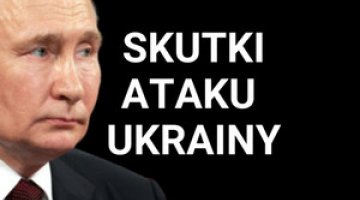The deteriorating military situation in the Donbas
In July 2016 the military situation in the conflict zone in the Donbas region further deteriorated. After months of relative calm both sides intensified exchanges of fire, including the use of heavy artillery, along the entire demarcation line. This deteriorating does not however represent a new quality. The present fighting should be regarded as moderately intense, compared to the offensive which had been launched following the signing of the Minsk agreements (particularly during the fighting to win back Marinka and Starohnativka in September 2015). The fighting and attempts to break into the enemy’s position may intensify again at any moment. However, larger-scale operations would require more preparation, including increased military transportations from Russia, which Ukraine has not seen despite Kyiv’s warnings about a possible Russian strike under cover of the Caucasus 2016 exercises planned for September.
It may be assumed that Russia intends to use the present escalation of exchanges of fire to put more pressure on Kyiv, and mainly on the West, in order to break a several month long deadlock in the process of implementing the Minsk II agreement which is unfavourable for Ukraine. Moscow’s strategic objective is not only to extend its exclusive influence to Ukraine but also to realise the Kremlin’s vision of the international order.
The military situation in the conflict zone
From the military point of view the Minsk agreement has always been a fiction. Exchanges of fire occur on a daily basis (with the exception of several days in September 2015 following the conclusion of the latest in a series of truce agreements introducing a silence regime). Only the frequency of fire changes periodically.
In July, as had been the case in the previous months, a direct exchange of small arms and mortar fire dominated on the demarcation line in the Donbas, with exchanges of fire from tanks and heavy artillery occurring to a lesser extent; the operations were of a positional character. The only confirmed case of Ukrainian troops shifting position in the area of Gorlovka extended to several hundred metres of no man’s land and did not provoke any serious counter-action from the separatists. Both parties have been accusing each other of grouping together heavy artillery in the buffer zone (which is in breach of the Minsk agreements) and of preparing for an offensive. The deployment of heavy weaponry was observed but it was linked with the ongoing exchange of fire and the necessity to rotate troops. At the beginning of August the intensity of fighting subdued.
The impression that the fighting had increased in intensity was also due to chaos in the communication of information. Since June this year the separatists, particularly those from the Donetsk People’s Republic, have been reporting statistics of exchanges of fire several times higher – several hundred every 24 hours (compared to numbers in double figures previously reported). This difference was however caused not by a genuine increase in activity of the Ukrainian government’s troops but by a method of calculation used by the separatists. In the statistics published at present they record all incidents of exchange of fire, regardless of whether the fire came from heavy calibre weapons or any other type of arms (most likely all incidents, including single shots from rifle weapons, are reported). The Ukrainians have been applying the method used so far, whereas representatives of the Luhansk People’s Republic are applying both methods, depending on what their needs are. Military losses in July were double those in winter and spring but they did not diverge from the average which has been observed since February 2015. Ukrainian military losses amounted to 700 killed and wounded from January to June 2016. This compares to the first three weeks (i.e. during period of the highest intensification of fighting) when 27 Ukrainian soldiers were killed and 123 wounded. In July the number of civilian casualties increased – 73 people (according to UN data). Although these statistics are higher than in previous months, when the number of people killed ranged from 20 to 40, between June and August last year the number of casualties was higher still – 150-170 a month.
The fighting includes offensives (attempts to break into the enemy position and capture new territories as was the case during the clashes over the Debaltseve cauldron in February 2015) and it may escalate at any moment. This is due to the forces and arms the fighting parties have gathered in the conflict zone – there are approximately 150,000 troops of all military formations on both sides (in the case of Ukraine, apart from the armed forces there is also: the National Guard, subordinated to the Ministry of Internal Affairs; and Border Troops), among them approximately 60,000 separatist forces and several thousand heavy arms. The preparation for limited offensive operations is not complicated technically and is possible within a dozen to a maximum of several tens of hours.
The deployment of heavily armed troops on both sides and their periodic increased density in the buffer zone constitute a constant element, in part due to the necessary rotation of troops and arms at the frontline. When this is taken into account, at present it is difficult to draw conclusions about the preparation of any major operation. It would be difficult to cover up preparations for large-scale actions, for example attempts by the separatists to capture a part of the Donetsk and Luhansk oblasts which remain under the control of the Kyiv government, or an attack on other Ukrainian regions. In this case a substantial increase in the number of military transportations from Russia to separatist-controlled territory would be observed. Ukraine, referring to the Russian-Georgian war of 2008, has suggested that preparations for the Caucasus 2016 exercises planned for September (also in Crimea) might serve as the introduction to such an operation. The exercises are largest training event this year of the armed forces of the Russian Federation in the European part of Russia and they will involve all forces from the Southern Military District and the Black Sea Fleet. It should however be emphasised that the exercises code-named ‘Caucasus’ are a cyclic event and their launch in 2016 was determined two years ago and was included in the 2015 training programme. The fundamental part of the exercises takes place on training grounds in the South Caucasus.
Kyiv and the Donbas: playing for time
As usual, the Ukrainian government has given a stern response to the escalation of fighting in the Donbas in July. A section of Ukrainian politicians and experts have been claiming for months that Russia is preparing for a new phase of military operations in eastern Ukraine. On the one hand, this is caused by real fears of the return to large-scale military operations. On the other hand, it is intended to consolidate Ukrainian society around the government in the face of an external threat. The recurrent warnings of a supposed ‘new great war’ have made such speculations trivial. On 5th August the president of the National Security and Defence Council, Oleksandr Turchynov said that the full-scale military aggression scenario would be ‘problematic to carry out and dangerous for Russia itself’. He added, however, that there would be a continuation of military operations of low intensity, including attempts by the ‘separatists’ to launch a local offensive. The latter view seems to be dominant among Ukrainian decision makers, whereas the media are dominated by radical views provoked by, among other factors, the eighth anniversary of the Russian intervention in Georgia and a mysterious attack on the leader of the Lugansk People’s Republic, Igor Plotnitsky (on 6 August). The speculations about a possible Russian intervention have also been fed by Russian troops regrouping in Crimea and shut down a part of ‘border’ crossings with continental Ukraine. The Ukrainian government has also raised concerns regarding allegations made by Russia on the afternoon of 10 August that a Ukrainian diversion group was detained in Crimea on the night of 6 to 7 August. According to Russia, a soldier and an official from the Federal Security Services were killed during an exchange of fire. Kyiv’s representatives deemed this information to be an incitement.
Kyiv is aware that Russia is using a contained escalation of the conflict in the Donbas to apply pressure on Ukraine and the West over the implementation of the Minsk II agreement. The agreement is unfavourable for Ukraine in that it calls for constitutional reform to introduce a special status for separatist entities in the Donbas and the legalisation of their ‘people’s militia’. So far Ukraine’s tactic has consisted in playing for time and arguing that any implementation of the agreement is impossible without a full ceasefire and the regaining of control over the border. A draft law on local elections in the Donbas was scheduled to be submitted to the Verkhovna Rada before the end of its summer session. It is however rather unlikely that it will be passed without Kyiv being guaranteed control over the organisation of the elections, including the establishment of an OSCE policing mission in the region. The Ukrainian government understands that any concessions made to Russia will trigger an internal political crisis and large-scale public opposition . As a result, it may be expected that Ukraine will pursue its tactic of the Normandy format talks in the coming months (most likely during the G20 Hangzhou summit to be held on 4-5 September, in line with the proposal of President Petro Poroshenko), albeit without the intention to make any further-reaching concessions to Russia.
A shift in Moscow’s tactics – from “carrots” to “sticks”
Moscow’s strategy and logic applied to the situation in Ukraine remain determined by two important factors. Firstly, Russia sees the Ukrainian government as a puppet of the West (the US and the EU), which leads to the assumption that it is not Kyiv which is its partner in the dialogue over Ukrainian issues but Berlin and Paris and then Washington. Secondly, Russia perceives the Ukrainian problem in the broader context as a game with the West not only over Moscow’s future position on the international arena but also regarding the new international order (based on the ‘concert of powers’, divergent spheres of influence and non-interference in the internal affairs of major players - above all Russia).
The objective of Russia’s policy towards Kyiv remains to prevent the development of a strong and stable Ukrainian state and Ukraine’s integration with Western structures. For Moscow the optimum solution would be to fully engage Ukraine in Russian-sponsored integration projects, while an acceptable solution would be Ukraine being a weak and unstable country with a ”neutral” status, mired in a constant political, economic and social crisis. Moscow would ensure its influence over such a country i.a. through the control of the Donbas, which would formally be a part of Ukraine.
As this issue is of strategic importance to Moscow, it is not ready to make any significant concessions. Its determination to continue exerting pressure on Kyiv and the West remains clear. It is manifested both in Russia’s constant support for ‘separatist’ armed groups which operate in the Donbas (while presenting the conflict as ‘internal’) and the instrumentalisation of the Minsk II agreement which is disadvantageous to Ukraine. While formally declaring its support for the agreement, the Kremlin is in fact seeking to force Kyiv to implement it unilaterally and is shifting complete responsibility for the lack of progress in this area onto Ukraine. The minimum objective which Moscow is determined to achieve is to maintain the status quo in Ukraine, while making efforts to have the Western sanctions lifted (which in practice would mean that the West would recognise Russia’s policy of faits accomplis). The maximum plan for the Kremlin would be to implement the Minsk II agreement and to effectively paralyse Ukraine by introducing Moscow-controlled ‘separatists’ into the government and decision-making processes.
The international context
As Moscow sees it, the international situation is favourable for Russia to achieve its goals. The West seems to be growing increasingly weary of the Ukrainian question and the Ukrainian conflict is being gradually marginalised (in the face of the political crisis within the EU). The measures undertaken by Moscow (propaganda, infiltration of a section of expert and decision making circles in the West) are meant to strengthen the position of European and American ‘realists’ who talk of the need of dialogue with Moscow and to discredit ‘Russophobes’ by emphasising that ignoring Russia’s stance may lead to a military conflict on a larger scale. Although it is probable that Russia will refrain from any decisive actions on the international arena until after the US presidential election, it should be expected that it will seek to influence the election results by continuously discrediting the policy of the Democrats and Hillary Clinton as a presidential candidate. In Russia’s rhetoric Clinton is seen as being ‘Russophobic’ and confrontational. These measures are intended to break the solidarity within the EU and NATO in their policy towards Russia and Eastern Europe. These calculations may be strengthened by Moscow feeling that it has consolidated its international position over the last several months, including by maintaining a military presence in Syria, settling the conflict with Turkey (on Russian terms) and by further developing close relations with Iran and China, which makes it a favourable context for a possible intensification of Russia’s policy towards Ukraine.
The outlook
It should not be ruled out that Russia is determined to achieve its objectives with regard to Ukraine and the West by all means necessary, including by seeking a further-reaching escalation of armed operations in the Donbas (a territorially contained conflict with no formal engagement of Russian troops). Nevertheless, it remains part of Russia’s logic to use both persuasion and conciliatory measures (e.g. a relatively toned down reaction to the outcomes of the Warsaw NATO summit; releasing Nadiya Savchenko or containing the escalation of tensions in the Donbas between September 2015 and June 2016) and confrontational actions (underlining the constant threat of an outbreak of a large-scale conflict and selectively stoking tensions in relations with Ukraine). This tactic is meant to persuade Moscow’s Western partners to take its interests into account to a larger extent and to put more pressure on Kyiv in further negotiations about the Minsk II agreement. Moscow may be even more inclined to reinforce its confrontational approach as, in its own opinion, it has not seen an ‘adequate’ response from the West to its above mentioned ‘concessions’ (the sanctions have not been lifted and ‘anti-Russian’ decisions have been made at the NATO summit). Russian propaganda will consistently present Ukrainian authorities as responsible for the escalation of operations in the Donbas (by blaming them for incidents of diversion, including the attack on the leader of the so-called Lugansk People’s Republic, Igor Plotnitsky and attacks on civilians).





